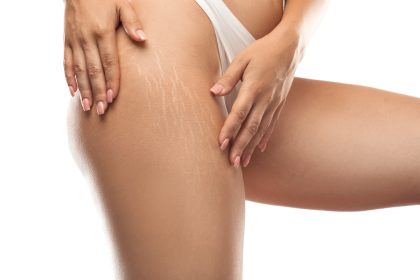Hidden ingredients in everyday products can trigger unexpected skin reactions, from mild irritation to severe rashes. Understanding these common irritants helps consumers make informed choices about personal care products and household items. Dermatologists emphasize the importance of identifying potential triggers to maintain healthy skin.
The fragrance factor
Synthetic and natural fragrances represent leading causes of skin reactions in personal care products. These additives, found in lotions, shampoos, and household items, often contain complex chemical compounds that can irritate sensitive skin. Even products labeled “unscented” may contain masking fragrances that trigger reactions.
Dermatologists recommend choosing fragrance-free or hypoallergenic alternatives when possible. Performing patch tests with new products helps identify potential sensitivities before widespread use. This cautious approach proves particularly important for individuals with existing skin conditions.
Preservation problems
Product preservatives, while necessary for extending shelf life, can cause significant skin reactions. Common compounds like parabens and formaldehyde-releasing agents appear in many cosmetics and personal care items. These ingredients help prevent bacterial growth but may trigger allergic responses in sensitive individuals.
Methylisothiazolinone, frequently found in hair care products, has gained attention for its potential to cause contact dermatitis. Formaldehyde releasers, present in various beauty products, can trigger similar reactions. Reading ingredient labels carefully helps consumers avoid these common irritants.
Metal sensitivities
Nickel allergy ranks among the most common metal sensitivities, affecting daily life through contact with jewelry, clothing fasteners, and electronic devices. This prevalent allergen causes redness, swelling, and intense itching in susceptible individuals. The widespread use of nickel in everyday items makes avoidance challenging.
Choosing nickel-free alternatives for jewelry and accessories helps prevent reactions. Using protective cases for electronic devices and being mindful of metal contact points in clothing can significantly reduce exposure. Dermatologists can perform patch tests to confirm nickel sensitivity.
Artificial colorants
Food dyes and cosmetic colorants frequently trigger skin reactions. These artificial ingredients, often labeled as FD&C or D&C followed by numbers, appear in processed foods, beverages, and personal care products. Red Dye #40 and Yellow #5 (Tartrazine) commonly cause allergic responses.
Natural alternatives increasingly replace artificial colorants in many products. Reading ingredient lists carefully helps identify potential triggers. Choosing products with natural pigments or no added dyes reduces reaction risks while maintaining desired aesthetic qualities.
Surfactant sensitivity
Sulfates like sodium lauryl sulfate (SLS) and sodium laureth sulfate (SLES) create the foaming action in many cleaning products. While effective cleaners, these compounds can strip skin’s natural protective barriers, leading to dryness, irritation, and increased sensitivity to other irritants.
Many manufacturers now offer sulfate-free alternatives in response to consumer concerns. These gentler formulations clean effectively while maintaining skin’s natural moisture balance. Reading product labels helps identify sulfate-containing items.
Protective strategies
Maintaining healthy skin requires vigilance about product ingredients. Dermatologists recommend several protective approaches:
Regular label reading provides crucial information about potential irritants. Understanding common ingredient names helps identify problematic substances before they cause reactions. Performing patch tests with new products allows early detection of sensitivities.
Professional guidance
Consulting dermatologists proves valuable for individuals experiencing frequent reactions. These specialists can identify specific triggers through controlled testing and recommend safe alternatives. Professional guidance helps develop effective skincare routines that avoid common irritants.
Hypoallergenic products offer safer options for sensitive individuals. While this term lacks strict regulation, these items typically contain fewer known irritants. Dermatologist recommendations often include specific product lines designed for reactive skin.
Long-term management
Successfully avoiding skin reactions requires ongoing attention to product choices. Keeping detailed records of reactions helps identify patterns and triggers. This information proves valuable when selecting new products or discussing concerns with healthcare providers.
Skin sensitivity patterns may change over time, requiring periodic reassessment of product choices. Staying informed about new research and product developments helps consumers make educated decisions about personal care items.
The growing awareness of skin reactions has led manufacturers to develop more skin-friendly alternatives. These innovations provide expanded options for individuals seeking to avoid common irritants while maintaining effective personal care routines.
This story was created using AI technology.













